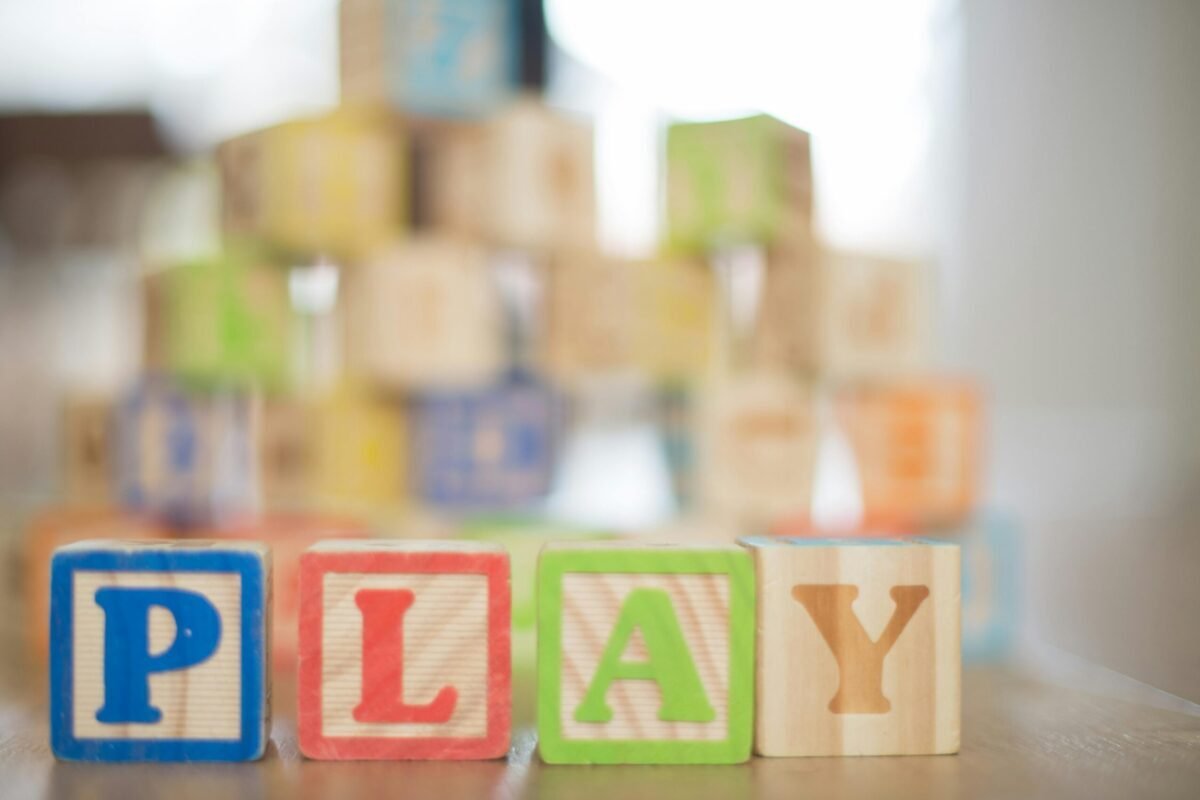The STAR method (Situation, Task, Action, Result) is a valuable framework for answering behavioral interview questions in a structured and clear way. This method helps you frame your answers to demonstrate your skills and experience, making you stand out in preschool job interviews. Below are 10 original examples of how to use the STAR method to showcase your expertise in early childhood education and your ability to thrive in a preschool environment.
By personalizing these examples with your own experiences, you can highlight your teaching skills, creativity, problem-solving abilities, and understanding of early childhood development. Whether you’re applying for a teaching or support staff role in a preschool, these examples will help you communicate your strengths in a way that resonates with interviewers.
Interview Questions with Sample STAR Responses
Tell me about a time when you had to manage a challenging behavior in a preschool child.
Sample Response:
- Situation: Last year, I worked as an assistant teacher at ABC Preschool, and one of the children, who had recently joined, often displayed disruptive behavior during circle time, such as shouting or leaving the group.
- Task: My task was to address the disruptive behavior while maintaining a positive and inclusive environment for the other children.
- Action: I worked closely with the lead teacher and used a consistent approach to address the behavior. We implemented a visual behavior chart where the child could earn stars for following rules. I also incorporated more sensory activities to help the child focus during circle time.
- Result: Over time, the child became more engaged and began following the group routine. Their behavior significantly improved, and they were able to participate in circle time without disruptions. This experience demonstrated my ability to use positive reinforcement and individualized strategies to manage challenging behavior.
Tell me about a time when you helped a child overcome a developmental challenge.
Sample Response:
- Situation: As a preschool teacher at XYZ Early Learning Center, one of my students was struggling with fine motor skills, particularly with tasks like holding a pencil and using scissors.
- Task: My responsibility was to help the child develop their fine motor skills so they could successfully participate in classroom activities and feel confident.
- Action: I introduced a variety of fun, hands-on activities, such as playdough sculpting, threading beads, and cutting shapes from paper, to strengthen their hand-eye coordination. I worked closely with the child, offering praise and encouragement throughout each activity.
- Result: After several weeks, the child showed noticeable improvement in their fine motor skills. They were able to hold a pencil with a proper grip and use scissors with greater ease. This experience reinforced my understanding of how to use hands-on activities to support developmental milestones in young children.
Tell me about a time when you worked as part of a team to organize a preschool event.
Sample Response:
- Situation: During my time at DEF Preschool, our school was planning a holiday celebration, and I was part of the team tasked with organizing the event.
- Task: My role was to help design the activity schedule, create decorations, and ensure all children were engaged and had a positive experience.
- Action: I collaborated with my colleagues to brainstorm fun activities, such as a craft station for making holiday cards and a story-time corner. I helped set up the event, ensuring that materials were ready and that activities were appropriate for different age groups. I also coordinated with parents to have volunteer assistance during the event.
- Result: The event was a huge success, with children and parents enjoying the activities. Parents gave positive feedback about the creativity of the event, and the children were excited and engaged throughout. This experience demonstrated my ability to work effectively as part of a team and contribute to the planning and execution of preschool events.
Tell me about a time when you had to handle a safety concern at preschool.
Sample Response:
- Situation: While working at GHI Preschool, I noticed that a few toys in the outdoor play area were beginning to show signs of wear and tear, which posed a safety risk to the children.
- Task: My responsibility was to address the safety concern and prevent any accidents from occurring.
- Action: I immediately reported the issue to the preschool director and worked with the maintenance team to remove the damaged toys and replace them with safer alternatives. I also helped organize an inventory check of all outdoor play equipment to ensure everything was in good condition.
- Result: The outdoor play area was made safer, and no injuries occurred due to damaged toys. The children were able to enjoy outdoor play with greater confidence. This experience highlighted my attention to detail and commitment to maintaining a safe environment for young children.
Tell me about a time when you had to adjust a lesson plan to meet the needs of your students.
Sample Response:
- Situation: I was teaching a group of three-year-olds at JKL Preschool when I realized that my planned lesson on shapes and colors was not engaging the children as I had hoped. They were losing interest quickly.
- Task: My task was to adjust the lesson plan to ensure the children were engaged while still meeting the learning objectives.
- Action: I decided to modify the lesson by incorporating more movement and hands-on activities. I turned the shapes into a scavenger hunt, where the children had to find objects of specific shapes around the classroom. I also used songs and games to reinforce color recognition.
- Result: The children became more engaged and excited about the lesson. They were actively participating, and by the end of the activity, they were able to identify various shapes and colors more confidently. This experience showed my flexibility and ability to adapt lessons to suit the needs of young learners.
Tell me about a time when you had to build a relationship with a difficult child.
Sample Response:
- Situation: At MNO Preschool, I had a student who was initially very shy and hesitant to engage with others. They often withdrew during group activities and struggled to connect with their peers.
- Task: My task was to help this child feel more comfortable and develop positive social skills.
- Action: I made it a priority to spend one-on-one time with the child, engaging in activities they enjoyed, like drawing and building with blocks. I also paired them with a buddy during group activities and provided gentle encouragement to help them build confidence in interacting with others.
- Result: Over time, the child became more confident and began participating in group activities. They formed stronger connections with their peers and showed improved social skills. This experience demonstrated my ability to develop meaningful relationships with children and help them grow emotionally and socially.
Tell me about a time when you had to handle a conflict between children.
Sample Response:
- Situation: While working at PQR Preschool, two children began arguing over a toy in the block area, and the situation was escalating into a physical confrontation.
- Task: My responsibility was to intervene in the conflict and resolve the situation in a way that taught the children appropriate social behavior.
- Action: I calmly approached the children and helped them express their feelings using words. I guided them through the process of taking turns and explained the importance of sharing. After the conflict was resolved, I praised both children for communicating and problem-solving.
- Result: The children were able to resolve the issue peacefully, and they learned valuable conflict-resolution skills. The situation was diffused without further escalation, and the children showed improvement in their ability to work together in future play sessions. This experience reinforced my ability to handle conflicts in a calm and constructive manner.
Tell me about a time when you incorporated a child’s interests into your lesson plan.
Sample Response:
- Situation: At STU Preschool, one of my students had a deep interest in dinosaurs and loved to talk about them during free playtime.
- Task: My task was to incorporate this interest into a lesson plan to engage the child and make learning more meaningful for them.
- Action: I designed a week-long unit centered around dinosaurs. The children participated in activities like making dinosaur footprints in the sandbox, learning about different types of dinosaurs, and creating dinosaur-themed art projects. I also read dinosaur books and included songs related to dinosaurs during circle time.
- Result: The student, along with their peers, was highly engaged and excited throughout the week. The child’s vocabulary and knowledge of dinosaurs grew, and they actively participated in all activities. This experience showed my ability to recognize and build on children’s individual interests to enhance learning.
Tell me about a time when you had to support a child’s emotional development.
Sample Response:
- Situation: At VWX Preschool, I worked with a child who was often upset and struggled to manage their emotions, particularly when it was time to transition from one activity to another.
- Task: My responsibility was to help the child develop better emotional regulation and coping strategies.
- Action: I introduced a “calm-down corner” with sensory toys and books to help the child self-regulate. I also worked with the child on identifying their feelings and using words to express themselves. I modeled deep-breathing exercises and offered positive reinforcement when the child used these techniques successfully.
- Result: Over time, the child became more confident in managing their emotions and was able to transition more easily between activities. They showed greater emotional maturity and felt more secure in the classroom. This experience emphasized my ability to support emotional development in young children.
Tell me about a time when you worked with parents to support a child’s development.
Sample Response:
- Situation: While working as a preschool teacher at XYZ Early Childhood Center, one of the children had difficulty staying focused during group activities and following directions.
- Task: My task was to collaborate with the child’s parents to identify strategies to support the child’s development both at school and at home.
- Action: I arranged a meeting with the parents to discuss the child’s behavior and development. Together, we created a plan that included simple tasks at home, like using a timer to help the child focus and providing visual cues for tasks. We also set up regular check-ins to assess progress.
- Result: The child showed improvement in following directions and staying focused during group activities. The parents expressed appreciation for the partnership and support, and the child’s overall progress was evident in the classroom. This experience highlighted my ability to build strong parent-teacher relationships and work together to support a child’s development.
In Closing
The STAR method provides a clear structure for presenting your experiences and skills in preschool interviews. By using the STAR framework, you can confidently answer behavioral questions and showcase your ability to handle various situations, from managing classroom behavior to supporting emotional and social development. Tailor these examples to reflect your own experiences, and you’ll be well-prepared to impress interviewers in your preschool job search.
Good luck with your interview preparations!
Related Posts
How to Use the STAR Method to Answer Interview Questions
How to Conduct a Self-Assessment to Identify Your Strengths and Weaknesses








